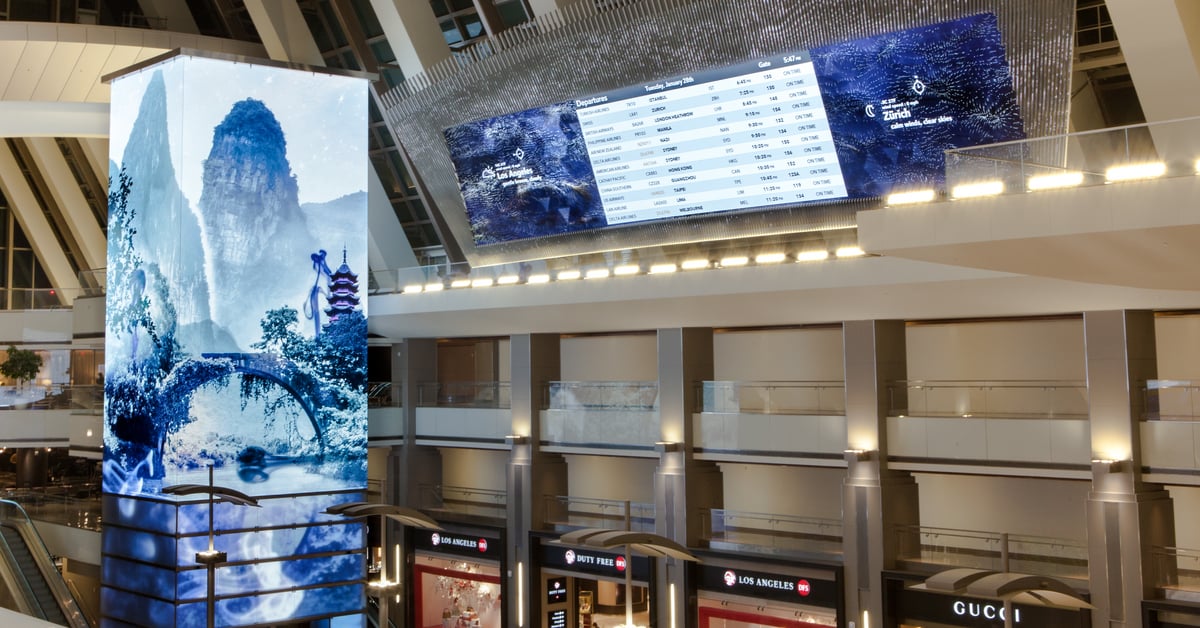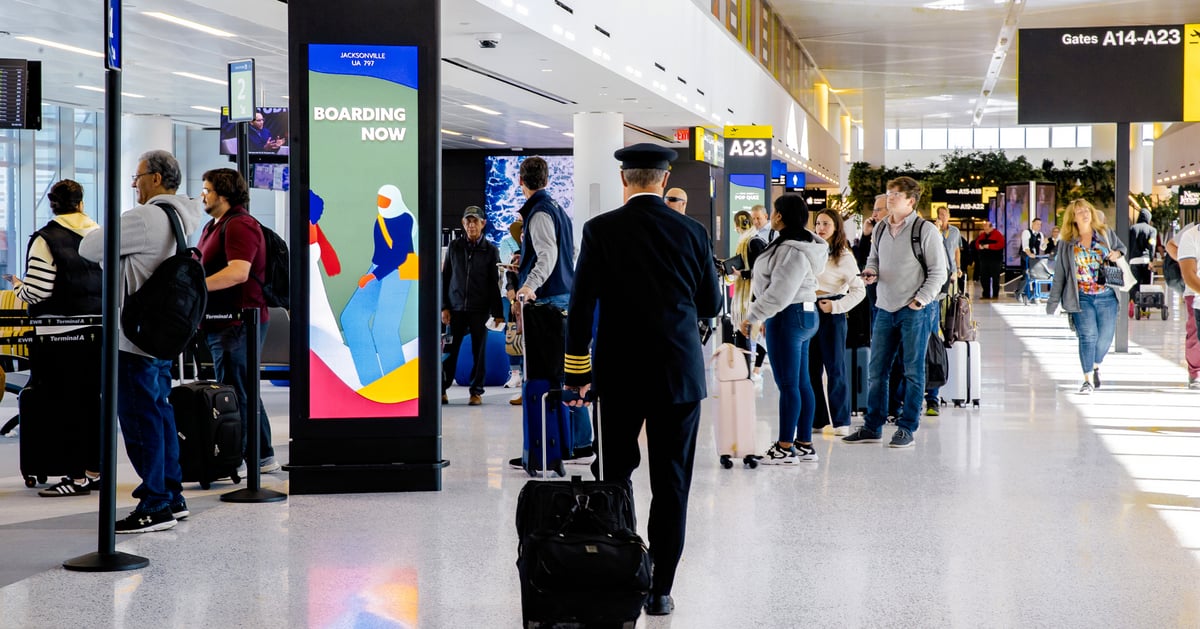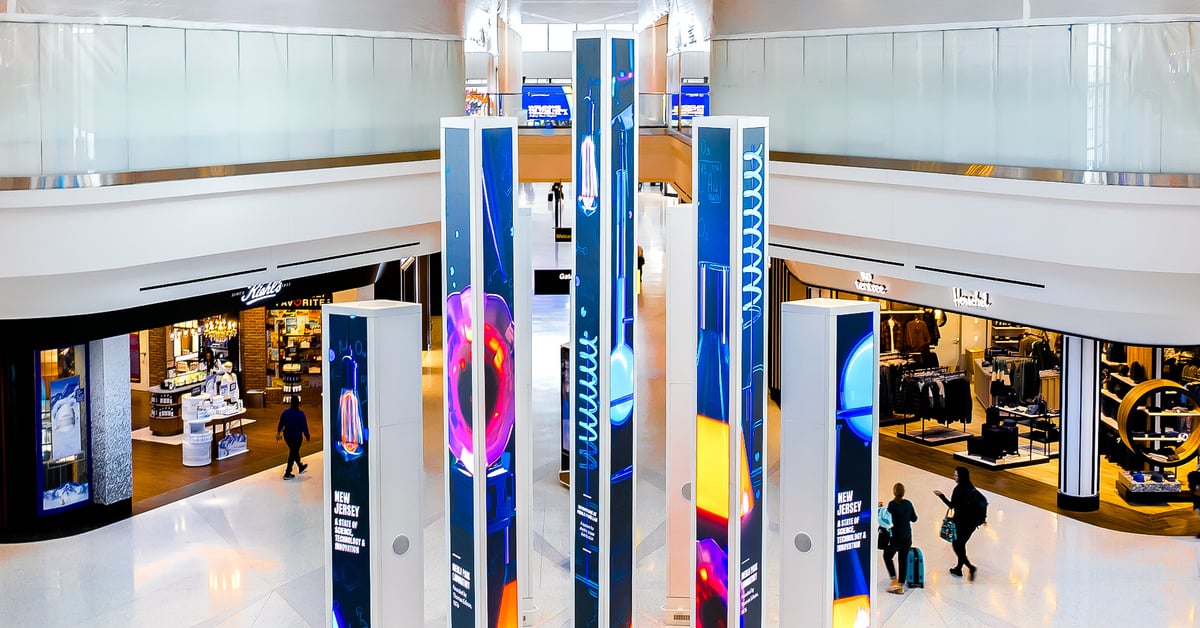
Improving future airport experiences with experiential technologies
In today's airport landscape the significance of enhancing passenger experience cannot be overstated. Not only does it play a crucial role in boosting revenue but it also holds immense potential for future airport experiences.
Research conducted by ACI reveals that a mere one percent increase in global passenger satisfaction leads to an average growth of 1.5 percent in non-aeronautical revenue. This compelling data underscores the undeniable importance of prioritizing passenger experience.
Passenger experience - shaping airport designImproving passenger experience is essential because airports have a captive audience of people who want to avoid the boredom and discomfort of spending time in airport terminals. That’s no surprise because passengers spend an average of three hours and 20 minutes in airports, according to the Denver Business Journal.
Other factors are driving higher passenger expectations. According to Aviation Source, the pandemic accelerated the use of technology in the airline industry, with many airlines introducing contactless check-in, mobile boarding passes and other digital innovations.
Passengers now expect airlines to provide a seamless digital experience from booking to boarding. This includes booking flights online, receiving real-time flight updates and accessing entertainment and other services via technology in the airport terminal.

Future airport experiences
To meet changing passenger expectations leading airports are now creating Customer Experience (CX) departments dedicated to ensuring that every action the airport takes has passengers' best interests in mind.
CX executives are setting a number of important objectives:
- Provide timely information through Advanced Passenger Information Systems.
- Minimize stress and delays by creating a smooth passenger journey throughout the terminal.
- Make the experience fun and interactive with multimedia content to introduce a sense of calm in busy airport terminals.
- Create a positive impression of the airport – and the region it supports - through placemaking.
As a result, those airports that are able to provide a seamless digital experience are likely to gain a strong competitive advantage in the future.
How placemaking contributes to airport success
Airports are often the first place passengers experience when arriving in a new location, so terminals serve an essential role in communicating and celebrating a city and its surrounding region.
Placemaking installations welcome passengers, connecting with them and helping make the terminal part of a destination that people want to visit, with content that makes the region shine through technology. In the long term that can encourage more passengers to choose an airport as their go-to destination.
As Gensler point's out in a recent article "Why Airports Must Create a 'Place of Sense' to Engage Travelers", airports are more than just a means to get from A to B, increasingly, they are becoming recognised as important civic gateways representing the regions they serve.
Two cool 'passenger-first' terminals
A great example of a 'passenger-first' placemaking environment is the new Terminal A at Newark International Airport. Four unmissable multimedia installations transform the passenger experience. This is place-making on a grand scale with a welcome banner 232 feet by 8 feet, a 'Forest of Firsts' LED pylons that tower almost 30 feet above travelers, a 12-foot-high 'Welcome to New Jersey' sculpture edge lit and 33 informative and fun LED pylons welcoming passengers to the hold rooms.
It's a similar story at the Tom Bradley International Terminal at LAX, where an Integrated Environmental Media System including seven digital media features provides a great immersive passenger experience. A Welcome Wall greets new arrivals with stunning scenes, while the Bon Voyage Wall infuses creativity and energy to say goodbye. The system integrates audiovisual, enterprise-grade information technology and show-control technology to manage interactive data-driven content across various features and platforms.
Reimagining airport design with experiential technology
Experiential technology is the common factor in those two examples. It's transforming airport terminals from transportation hubs that passengers simply pass through to fun, informative environments.
Experiential design is the process of using technology to tell a story and communicate information in a space in a more compelling way. The objective is to engage passengers and deliver 'infotainment'. Experiential design is widely used in many different spaces, from theme parks to museums and corporate lobbies. Now, it's becoming the essential differentiator for airport operators who want to transform passive travelers into engaged passengers with improved airport design.
Experiential technology provides a canvas to tell stories that blend entertainment and essential information. The story could be as simple as wayfinding or flight information or more compelling, like the placemaking installations that celebrate the local region, its people and its diverse culture.
Experiential technology can be used in many different applications within airport terminals:
- Digital signage that is vibrant, easy to read, energy-efficient and easily updatable.
- eGates with integrated lane queueing make navigating check-in seamless.
- Video walls that convey information, stories, history and local information.
- Interactive displays that passengers can use for fun or find necessary information.
- Large-scale LED pylons that feature multimedia content to add dynamism and stimulation.
- Digital statues that greet visitors to the region.
- AI-enabled interactive experiences that amaze customers.
- And more...

Transforming terminals into cool experiential spaces
Terminals are critical in the passenger journey, so it's important to start putting plans together to create more engaging spaces. The funding set aside for airport innovation in the Bipartisan Infrastructure Law, totaling $5 billion, will go some way to enable this.
Planning experiential spaces for future airport terminals should occur early as part of wider discussions on terminal upgrades. To help airport executives develop and implement experiential spaces, Electrosonic is teaming up with experiential designers, content producers and engineering firms, including Moment Factory, in collaborative ventures that have already resulted in award-winning airport spaces. These ventures take a 'people-first' approach to placemaking technology to create effortless experiences for passengers and airport operators alike.
Photography of Los Angeles International’s Tom Bradley International Terminal and Newark International Airport Terminal A courtesy of Moment Factory.
Brandon Harp
Brandon Harp, Senior Business Development Manager at Electrosonic focuses on Airports, Transportation, Corporate and Retail verticals. He has a unique ability to look at technology through a creative lens with a consistent passion and determination to develop innovative and impactful solutions for clients. Brandon quickly identifies challenges and pain points by listening and communicating effectively. He is a knowledge expert, a problem solver, a thought leader, and a trusted advisor who always keeps the client’s best interests at heart. Brandon understands the importance of design, architecture, content, storytelling and experience and he is constantly looking for new and innovative ways of pushing the boundaries around what is possible.










.jpg?width=1500&height=995&name=ELC501_N17_medium%20(1).jpg)

![[Discover how Tom Bradley International Terminal LAX is creating an innovative world-class passenger experience]](https://no-cache.hubspot.com/cta/default/5104351/1cd94678-6cc5-408f-9cf5-6595f771f407.png)









































































































































































































